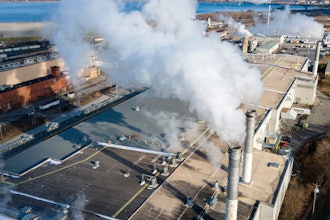Distribution could be in the midst of a consolidation phase.
Industrial Distribution’s latest Annual Survey of Distributor Operations, for example, shows that 25 percent of industrial distributors would be agreeable to accepting a buy-out offer, up from 19 percent last year.
One-third of the respondents say they are actively looking to acquire another distributor, up slightly from previous years. And during 2013 and the first half of this year, there have been a number of transactions — which doesn’t surprise industry experts.
“The M&A and financing markets are incredibly strong,” says P. Reed Anderson, managing director and head of distribution for Houlihan Lokey, a global investment bank with expertise in mergers & acquisitions.
“Valuation and leverage multiples are at or near historical highs. The current environment represents a phenomenal time for an owner to maximize valuation in a sale. Buyers fall into two camps — both of which are highly motivated and equipped to pursue acquisitions today,” he says.
“Strategic buyers have strong balance sheets, large amounts of cash, and are seeking a way to maintain growth that outpaces moderate U.S. economic growth. Acquisitions fill that void,” Anderson adds.
He also pointed out that record amounts of capital are committed to private equity firms.
“Because of the lifecycles of funds, many raised capital before the downturn and are highly motivated to put capital to work now before it expires,” he says.
Distributors Foreshadow
In several recent calls with financial analysts as well as interviews with media outlets, some of distribution’s top CEOs made comments about consolidation.
Jim Ryan, chairman, president, and CEO of Grainger, the largest MRO distributor in the country, told Bloomberg.com that the industrial distribution sector is still a highly fragmented business but that “we are in the front stage of industry consolidation.”
During 2013, Grainger acquired two companies: Safety Solutions, a Dublin, OH-based distributor of safety footwear, supplies, and services with a strong focus on the manufacturing sector, and E&R Industrial Sales, Inc., a distributor of metalworking, production supplies, and MRO materials to manufacturers and industrial customers.
He isn’t the only CEO to mention consolidation.
In a conference call with industry analysts, Erik Gershwind, CEO of MSC Industrial Direct, says the industry could be in the early stages of consolidation.
“We’ve described many times what we see as those inflection points,” Gershwind told analysts.
“We see that beginning to play out. So on the one hand, that’s really exciting because I think that does provide the potential for a growth tailwind for our company,” he said. “On the other hand, we’re coming from a place where the Top 50 players in our space have 30 percent share. This is a story that will play out over a decade or more. So I would not characterize any ratcheting up of competitive intensity vis-a-vis large players. I would comment that the local distributors are under as much or more pressure than they’ve ever been,” he said, according to the transcript of the call as provided by www.seekingalpha.com.
MSC made one of the largest acquisitions in the distribution sector in the past few years when it acquired Barnes Distribution of North America (BDNA). The acquisition of BDNA for $550 million was announced in April of 2013.
Competitive Advantage
What we have also seen in acquisitions in the past few years is larger distributors buying competitors that have complementary product groups. This is allowing a distributor to become a one-stop shop for its customers.
Wesco, for example, was once thought of as a purely electrical distributor. The PA-based company completed the acquisitions of three companies during the first half of 2014. Two of those distributors were connected to the electrical, construction, and utility segments, but the third was Hazmasters Inc., a Canadian distributor of safety products servicing customers in the industrial, construction, and institution markets.
The addition of Hazmasters further expands WESCO’s presence in Canada and strengthens the company’s portfolio of MRO products and services. It is the second time in the past two years that Wesco has acquired a safety distributor. Previously, Wesco purchased Conney Safety and that acquisition has paid off handsomely. In fact, Wesco recently added 35 salespeople to its Conney staff.
Wesco has made ten acquisitions since June of 2010. In a conference call with analysts, John J. Engel, chairman, CEO, and president of Wesco said, “These acquisitions have strengthened our electrical core, added product and service offerings to our portfolio, expanded our global footprint, and improved our overall market position. Our acquisition pipeline is at a record level, and we see excellent opportunities to further strengthen our company via acquisitions throughout this year.”
Earlier this year, Kaman’s chairman and CEO Neal J. Keating outlined a series of strategic initiatives to grow the distribution segment of its business. Making additional acquisitions is one strategy.
Earlier this year, the company announced it would acquire all the operating assets of B.W. Rogers Company, a broad line distributor of fluid power products, including hydraulic hoses, fittings, pumps, motors, cylinders, valves, pneumatics, machine control, and automation products. The acquisition significantly expands Kaman’s footprint in both fluid power and automation. The acquisition also may result in Kaman becoming the sixth largest fluid power distributor in the country.
B.W. Rogers is one of largest distributors of Parker Hannifin motion and control products and operates from 21 locations in seven states from the Northeast to the Midwest. B.W. Rogers’ branch network includes 20 authorized Parker locations, which contain 12 ParkerStores. In the past two years, Kaman has acquired six other companies.
Company executives estimate that the Rogers acquisition will lead to Kaman being one of the largest Parker distributors in the country.
Picking Up the Pace
Experts expect the pace of the industry consolidation to pick up.
Reed Anderson says that economies of scale represent a significant advantage in distribution — whether in sourcing, shipping, or value-added services to customers.
“Consolidators are also seeking to find more ways to entrench themselves with customers — whether through expanded product offerings, service, or geographic coverage,” he says. “Acquisitions can achieve this in a step function, versus trying to pursue one internally. The threat from e-commerce is also accelerating consolidation, as certain companies without e-commerce capabilities in some segments are struggling to compete with those that excel at e-commerce.”
Overall, the world economy is seeing an increase in the number of transactions across many business segments.
Global deal volume in the last quarter was $992 billion, according to data compiled by Bloomberg. That includes pending, completed, and proposed transactions. That number puts this three-month period on pace to be the biggest year for M&A since the third quarter of 2007 — the best year ever for deals.
Jack Keough is contributing editor of Industrial Distribution. He can be reached at [email protected].























